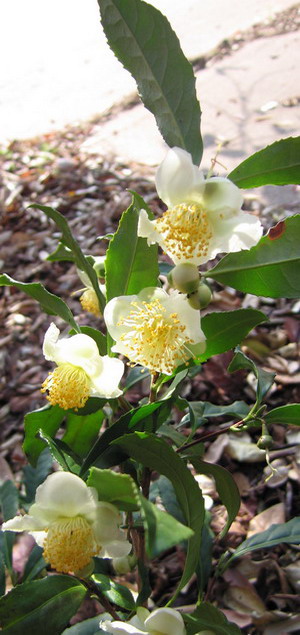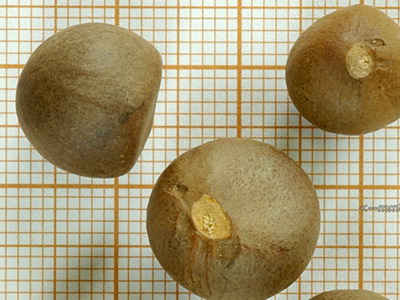
Plant type: perennial.
Description: It is a woody, perennial evergreen plant whose leaves and leafy buds are used to make Chinese tea. White, green, black and other types of tea are made from this flower, and different types of the famous drink are obtained due to different levels of oxidation. In total, there are three types of tea bush, which respectively belong to a shrub, a small tree or a tree. In total, there are three types of tea bush, which respectively belong to a shrub, a small tree or a tree. The tea bush, cultivated in China and Guangdong, is a small tree with a visible trunk and branches 20-30 cm above the ground. Most of the cultivated species of this plant are shrubs, and their height is from 1 to 3 meters, and they also do not have trunks. Species related to the tree can reach a height of several meters, and even varieties are known that grow about 10 meters tall. During the harvest period, people have to use ladders to collect the tea leaves.
- Origin: southwestern region of China.
- Aroma: present.
- Lighting: full sun or partial shade.
Foliage: The leaves of the tea plant are alternate, simple, often lanceolate, elliptical, oblong or oval in shape. The most common are ovate and oval leaves. Also, the foliage of the tea bush is divided into three groups according to the shape of the tip. There are pointed, blunt and rounded tips of the leaves.

Flowering of the tea bush in a large photo at home.
Flowering: The Chinese tea bush usually has a white shade of flowers. The flowers are hermaphrodites. They consist of a pedicel, sepals, petals, female and male organs, etc. Buds appear at the end of June, and bloom in October. Within one year and four months, mature fruits appear from the buds.
Tea bush – cultivation
Temperature Control: The tea bush, which is best grown in warm and humid climates, can tolerate low temperatures (around -10°C). The maximum growing temperature is 45°C, but above 35°C the growth of the tea plant will be slowed down and the leaves will begin to dry.
Soil type: It is desirable to choose an acidic soil, where the pH level will be from 5 to 6. The soil must be well drained. Sand and compost can be added to the soil.
Watering: The soil should always be moist. In the spring, increase the watering rate, and after the autumn harvest, stop watering the flower, in winter the tea bush is dormant. The required rainfall is from 1000 to 2000 mm.
Fertilizers: once every 2-3 weeks, use acidic fertilizers, half-mix them with water.
Reproduction: carried out by planting seeds and division. Seeds should be sown in spring when the night temperature is 12°C. Soak the seeds in water the day before planting, and keep them in the refrigerator for a while. Plant the seeds in small pots and place them near a sunny window. Spray them often. The first shoots will appear in 4-6 weeks.
Seedlings should be planted at a distance of 1.2 meters in a sunny or slightly shaded place. The soil must be acidic. Make sure the location you choose is well protected from the winds and the soil is well drained.

Additionally: the root system of a plant consists of a tap root, a lateral root, small roots, and root hairs. The tap root vertically grows into the soil to a depth of 2-3 meters, while in cultivated shrubs the root reaches 1 meter. Separated from the taproot, lateral and small roots transfer water and nutrients, so they are called conductive roots. Root hairs grow on small roots, and they absorb nutrients and water, so they are called assimilative. Lateral and other roots form a common root system, and it is usually 1-1.5 times larger than the tree crown.
The seeds of the tea bush are composed of the skin, seed pod, cotyledon and ovary. The seeds of the plant are rich in fats, starch, sugar and a small amount of saponin. Edible oil can be obtained from the seeds of the tea bush.

This perennial can be planted in hills and plains and preferably in mountainous areas. To avoid the possibility of freezing, do not choose regions where strong northerly winds blow.







